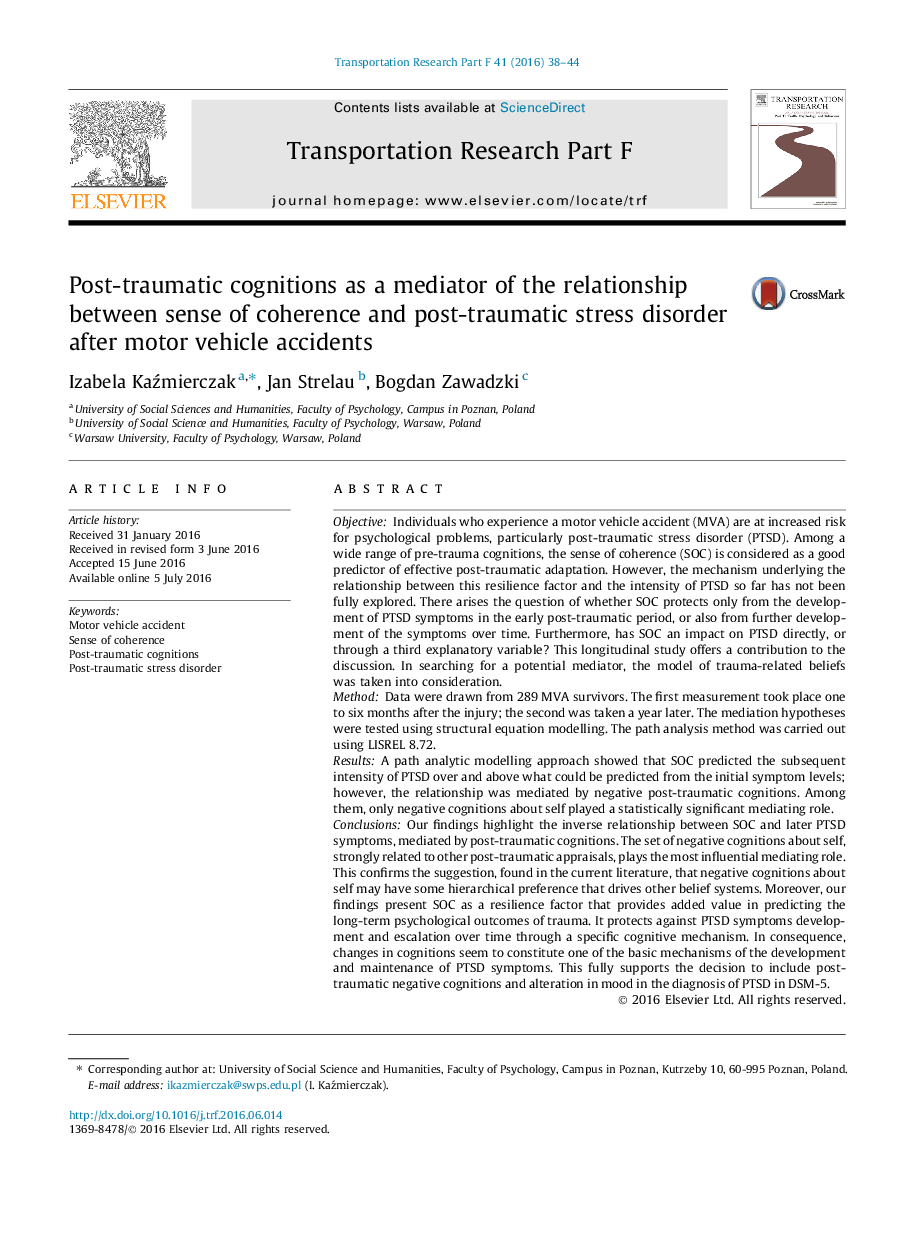| کد مقاله | کد نشریه | سال انتشار | مقاله انگلیسی | نسخه تمام متن |
|---|---|---|---|---|
| 897582 | 915173 | 2016 | 7 صفحه PDF | دانلود رایگان |
• The relationship between SOC and later PTSD is mediated by post-traumatic cognitions.
• The set of negative cognitions about self plays the most influential mediating role.
• SOC protects against PTSD escalation over time through a cognitive mechanism.
ObjectiveIndividuals who experience a motor vehicle accident (MVA) are at increased risk for psychological problems, particularly post-traumatic stress disorder (PTSD). Among a wide range of pre-trauma cognitions, the sense of coherence (SOC) is considered as a good predictor of effective post-traumatic adaptation. However, the mechanism underlying the relationship between this resilience factor and the intensity of PTSD so far has not been fully explored. There arises the question of whether SOC protects only from the development of PTSD symptoms in the early post-traumatic period, or also from further development of the symptoms over time. Furthermore, has SOC an impact on PTSD directly, or through a third explanatory variable? This longitudinal study offers a contribution to the discussion. In searching for a potential mediator, the model of trauma-related beliefs was taken into consideration.MethodData were drawn from 289 MVA survivors. The first measurement took place one to six months after the injury; the second was taken a year later. The mediation hypotheses were tested using structural equation modelling. The path analysis method was carried out using LISREL 8.72.ResultsA path analytic modelling approach showed that SOC predicted the subsequent intensity of PTSD over and above what could be predicted from the initial symptom levels; however, the relationship was mediated by negative post-traumatic cognitions. Among them, only negative cognitions about self played a statistically significant mediating role.ConclusionsOur findings highlight the inverse relationship between SOC and later PTSD symptoms, mediated by post-traumatic cognitions. The set of negative cognitions about self, strongly related to other post-traumatic appraisals, plays the most influential mediating role. This confirms the suggestion, found in the current literature, that negative cognitions about self may have some hierarchical preference that drives other belief systems. Moreover, our findings present SOC as a resilience factor that provides added value in predicting the long-term psychological outcomes of trauma. It protects against PTSD symptoms development and escalation over time through a specific cognitive mechanism. In consequence, changes in cognitions seem to constitute one of the basic mechanisms of the development and maintenance of PTSD symptoms. This fully supports the decision to include post-traumatic negative cognitions and alteration in mood in the diagnosis of PTSD in DSM-5.
Journal: Transportation Research Part F: Traffic Psychology and Behaviour - Volume 41, Part A, August 2016, Pages 38–44
